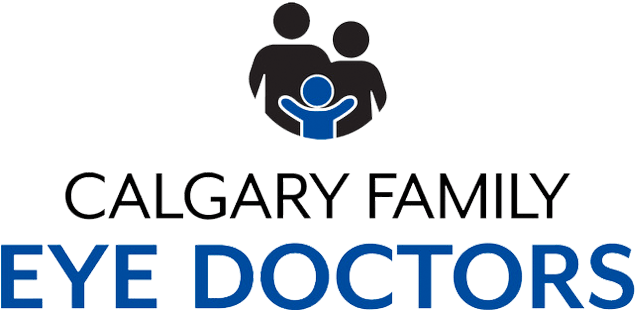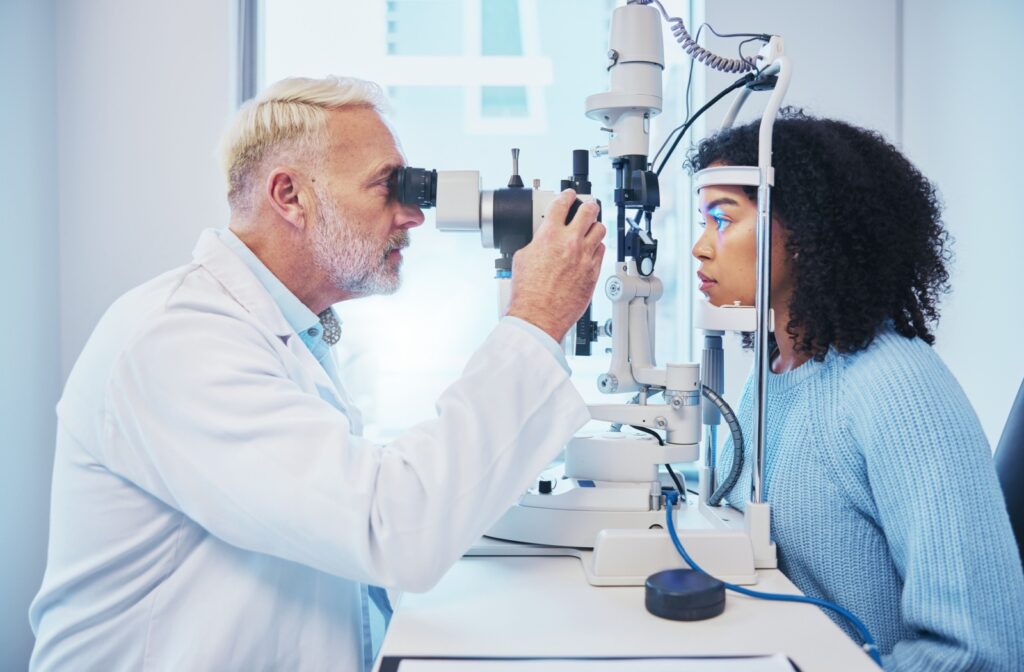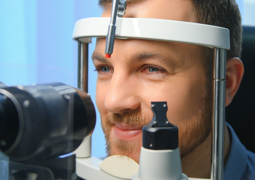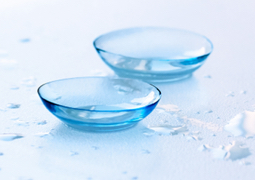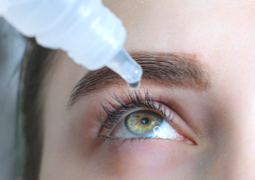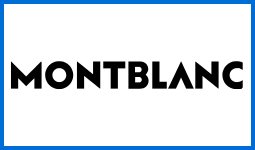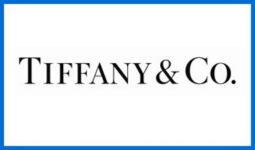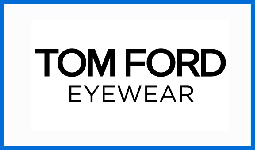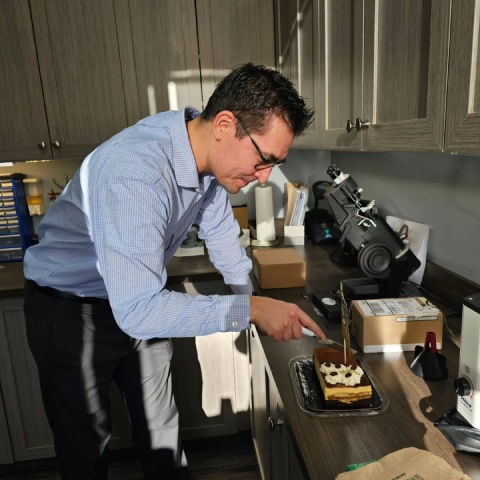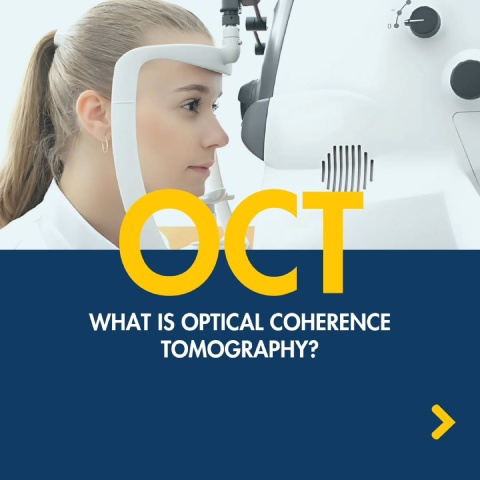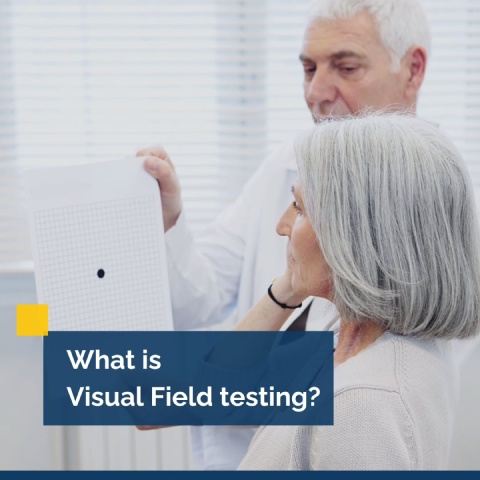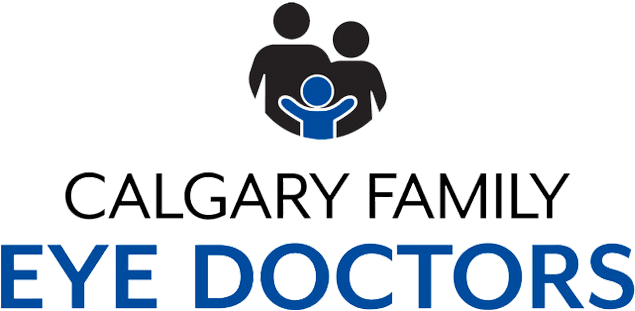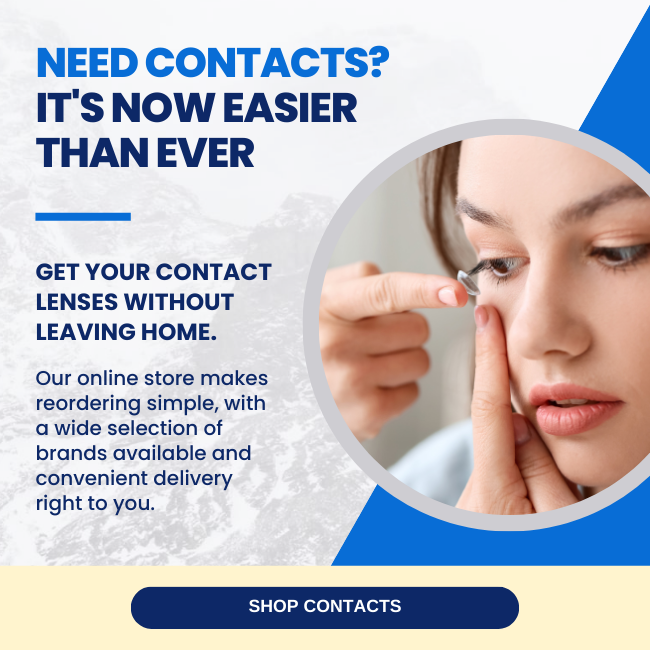Modern eye exams have evolved far beyond simple vision checks. Today’s optometrists use more advanced diagnostic tools that make it easier to detect eye conditions early and monitor changes over time. Technologies like retinal imaging and non-contact eye pressure testing provide a clearer and more detailed understanding of overall eye health.
These tools help identify problems like glaucoma, macular degeneration, and diabetic eye disease before symptoms develop, helping to support long-term vision care through earlier detection and more accurate monitoring.
5 Optometrists’ Tools Commonly Used Today
Here are five useful diagnostic tools your optometrist may use during an eye exam, each helping to check different aspects of your vision and overall eye health.
Zeiss OCT: Advanced Retinal Imaging
Optical Coherence Tomography (OCT) represents a significant advance in eye care technology. The Zeiss OCT system uses light waves to create detailed cross-sectional images of the retina, similar to how an MRI works for other parts of the body.
This tool allows optometrists to:
- Detect early signs of glaucoma before vision loss occurs
- Monitor macular degeneration progression
- Identify diabetic retinopathy changes
- Assess optic nerve health
- Track treatment effectiveness over time
For patients with diabetes, family history of eye disease, or older age, the OCT imaging provides baseline measurements that can become valuable for monitoring eye health changes over the years.
MYAH: Precision Myopia Management
The MYAH (Myopia, Hyperopia, Astigmatism) device is designed to help optometrists manage myopia progression in children and teenagers.
MYAH technology offers:
- Precise axial length measurements
- Corneal curvature mapping
- Pupil size assessment
- Accommodation measurement
- Progress tracking capabilities
For parents concerned about their child’s increasing nearsightedness, MYAH provides detailed data that helps eye doctors develop targeted myopia control strategies. The device tracks how a child’s eye grows over time, allowing for early intervention if myopia progression accelerates.
Optomap: Ultra-Wide Retinal Photography
The Optomap system takes ultra-wide digital images of the retina, capturing up to 82% of the retinal surface in one image. This provides a much broader view than traditional retinal photos, which show only small sections.
Benefits of Optomap include:
- Detecting early signs of retinal problems in the outer areas
- Creating a clear record for future comparisons
- Spotting retinal tears or detachments sooner
- Helping monitor certain health conditions that affect the eyes
- Allowing patients to see and understand their own retina
Optomap is especially helpful for finding issues that develop in the peripheral retina, where serious conditions can first appear.
iCare IC100: No-Puff Tonometry
The iCare IC100 tonometer measures eye pressure without the uncomfortable air puff or numbing drops used in traditional glaucoma testing. Instead, it uses a gentle probe that touches the eye briefly, making the test quick and easy for most patients.
Benefits of the iCare IC100 include:
- No air puff or sudden blasts of air
- No need for numbing drops
- Multiple quick measurements for accuracy
- Comfortable for patients of all ages
- Helps reduce anxiety during eye exams
Checking eye pressure is important for catching early signs of glaucoma, and the iCare IC100 makes this test simpler and more comfortable.

Humphrey Field Analyze: Visual Field Testing
The Humphrey Field Analyzer is widely used for visual field testing, helping optometrists check your full range of vision. It can detect blind spots and vision loss linked to conditions like glaucoma, stroke, or other neurological issues.
During the test, you look into the device and respond to small lights in different areas. The results create a detailed map of your vision, showing:
- Areas of normal vision
- Blind spots (scotomas)
- Loss of peripheral vision
- Changes compared to previous exams
- Signs of eye disease progression
This test is helpful for catching early signs of glaucoma, which often affects side vision first. It also helps monitor neurological health by spotting changes in vision linked to brain function.
How These Technologies Work Together
Modern eye care isn’t about individual devices working in isolation, but it’s about integrated systems that provide comprehensive information about eye health. Tools such as the ones listed above work together to create a complete picture of your vision and eye health.
For example, a patient concerned about glaucoma might undergo:
- Pressure measurement with the iCare IC100
- Optic nerve imaging with the Zeiss OCT
- Visual field testing with the Humphrey Field Analyzer
- Retinal photography with the Optomap
This combination provides multiple perspectives on eye health, allowing your optometrist to make more accurate diagnoses and create more effective treatment plans.
Your Vision Deserves the Best
Modern optometry uses advanced tools like Zeiss OCT imaging and iCare IC100 pressure testing to catch eye conditions early and monitor your vision over time. At Calgary Family Eye Doctors, we believe every patient should have access to this level of care—not just as a luxury, but as part of a thorough, routine exam.Book your comprehensive eye exam at Calgary Family Eye Doctors and see how advanced technology can help protect your vision.
